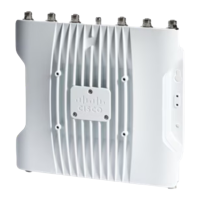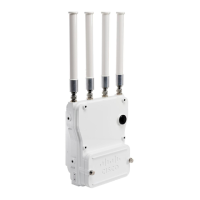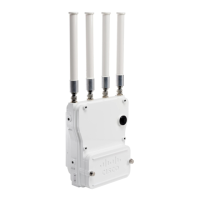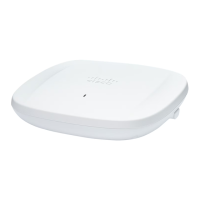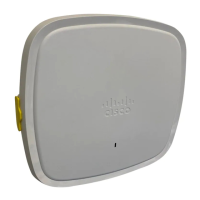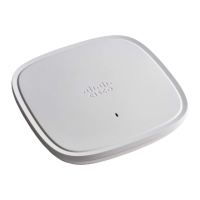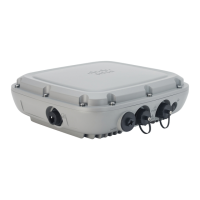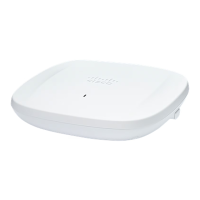• Power-over-Ethernet (PoE)
The AP can be powered via the PoE input from an inline power injector or a suitably powered switch port.
Depending on the configuration and regulatory domain, the required power for full operation is 802.3bt or
UPOE.
For more information, see Power Sources, on page 5.
Power Feature Matrix
The following table provides the AP power feature matrix.
Table 8: Cisco Catalyst IW9167I Heavy Duty Access Point Power Feature Matrix
SFPmGig
Eth
GNSSAux
Radio
dBm Per
Path
6 GHz
Radio
dBm Per
Path
5 GHz
Radio
dBm Per
Path
2.4 GHz
Radio
Power
Input
Yesmax 5GYesYes244x4244x4244x424-48V
Yesmax 5GYesYes174x4244x4244x4802.3bt/
UPOE
Yes/1Gmax 1GYesYes172x2232x2232x2802.3at
Connecting a Power Injector
The AP supports the following power injectors:
Table 9: Supporting Power Injectors
DescriptionPower Source
60W rated outdoor power injector, with North
America AC plug
AIR-PWRINJ-60RGD1=
60W rated outdoor power injector, global version
without AC plug
AIR-PWRINJ-60RGD2=
60W rated outdoor power injector, 5GEIW-PWRINJ-60RGDMG=
The power injector provides DC voltage to the AP over the Ethernet cable and supports a total end-to-end
Ethernet cable length of 100 m (328 ft) from the switch to the AP.
When an optional power injector powers your AP, follow these steps to complete the installation:
Step 1 Before applying PoE to the AP, ensure that the AP is grounded (see Grounding the Access Point, on page 33).
Step 2 Connect a CAT5e or better Ethernet cable from your wired LAN network to the power injector.
To reduce the risk of fire, use only No. 24 AWG or larger telecommunication line cord. Statement 1023
Warning
The installer is responsible for ensuring that powering the AP from this type of power injector is allowed by
local and/or national safety and telecommunications equipment standards.
Note
Cisco Catalyst IW9167I Heavy Duty Access Point Hardware Installation Guide
35
Installation Overview
Power Feature Matrix

